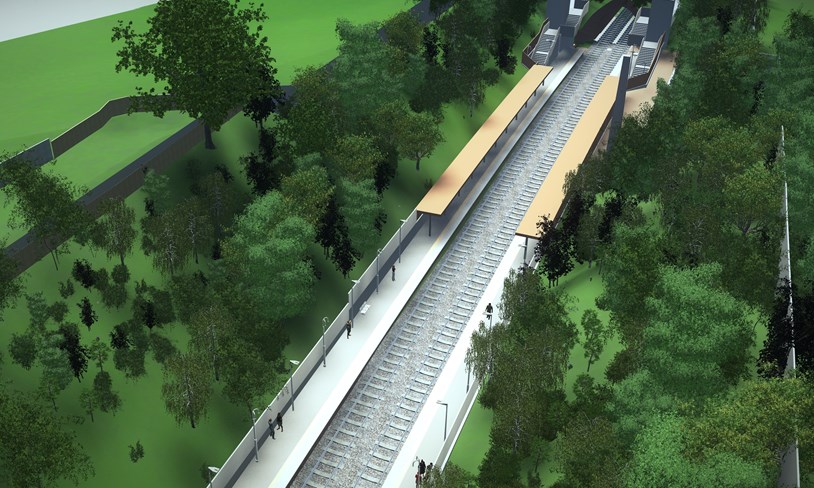How the Biggest Construction Companies in the U.S. Are Building Our Cities & Workforce
As the U.S. works to bounce back from the pandemic, top construction companies are helping lead the way to recovery. Across the industry, you can feel the momentum in resilience, creativity, and the human spirit for problem-solving.
While spending has seen fluctuation lately, it’s expected to rise over the next several years. In fact, according to the U.S. Census Bureau, national construction spending is expected to exceed $1.55 trillion in 2021. That’s a 7.5% increase from 2020. Of that $1.55 trillion, $1.2 trillion is expected to go to the private sector, with much of the remaining funds addressing public needs. With the passing of a major Infrastructure Deal, official construction spending estimates may change. The deal is expected to generate about two million jobs per year, for the next ten years, with an emphasis on America’s physical infrastructure.
So, who are the largest construction companies leading the way? We’ve created a SlideShare of the top 10 construction companies in the U.S. to answer that exact question. Our list is composed of companies ranking on ENR’s Top 400 Contractors list. On the SlideShare you’ll find information about each company’s location, revenue, employees and year founded. Flip through below, then continue reading to discover insights about how a few of these top companies, and more, tackle some of the most common construction challenges.
10 of the Largest Construction Firms in the U.S.
Here are the top 10 construction companies in the United States as listed above in our SlideShare.
1. The Turner Corp
- Location: New York, NY
- Employees: 10,000
- Revenue: $11.77 billion
- Founded: 1902
2. Bechtel
- Location: Reston, VA
- Employees: 55,000
- Revenue: $17.6 billion
- Founded: 1906
3. Fluor
- Location: Irving, TX
- Employees: 53,000
- Revenue: $19.166 billion
- Founded: 1912
4. Kiewit Corp
- Location: Omaha, NE
- Employees: 22,000
- Revenue: $10.3 billion
- Founded: 1884
5. The Whiting-Turner Contractin Co
- Location: Baltimore, MD
- Employees: 3,800
- Revenue: $6.2 billion
- Founded: 1909
6. Sto Building Group Inc
- Location: New York, NY
- Employees: 2,200
- Revenue: $4.9 billion
- Founded: 1971
7. Tutor Perini Corp
- Location: Sylmar, CA
- Employees: 10,000
- Revenue: $4.76 billion
- Founded: 1894
8. AECOM
- Location: Los Angeles, CA
- Employees: 54,000
- Revenue: $13.24 billion
- Founded: 1990
9. Skanska USA
- Location: New York, NY
- Employees: 7,600
- Revenue: $6.5 billion
- Founded: 1971
10. DPR Construction
- Location: Redwood City, CA
- Employees: 5,900
- Revenue: $5.94 billion
- Founded: 1990
How Top Construction Companies Approach 3 Common Challenges
Of course, with opportunity comes new obstacles. If you’re adept in problem solving, the following obstacles are exciting challenges that can give you a competitive edge if tactfully approached. For a better understanding of how you can approach three very common challenges in construction, we’ve provided examples of how top firms have succeeded in solving these problems.
1. Complex projects with tight deadlines
As technology improves, expectations rise as well. Highly technical projects require significant resource planning, forecasting, and attention to detail. Add in tight turnaround times and the obstacles only increase. Gilbane Building Company, ranked #11 on 2021’s ENR400, is one of the construction companies tackling challenges like this one head-on.
The Rhode Island-based firm constructed a state-of-the-art engineering lab and academic facility for students at the Wentworth Institute of Technology (WIT) in downtown Boston, Massachusetts. This project was WIT’s first new academic building in over 40 years.
Gilbane was brought in to construct the new four-story, 78,000-square-foot academic building for engineering innovation and sciences. They were on a short, 15-month schedule. In order to meet the tight turnaround and represent the polytechnic university’s focus on innovation, the firm leaned on cutting-edge technologies and processes. Specifically, Gilbane leveraged prefabrication, design-assisted preconstruction processes, and virtual reality (VR) to meet the deadline and high-tech requirements.
Speaking to prefabrication as one of those crucial pieces to finishing on time, John Myers, Gilbane’s director of visual design and construction for New England says, “Off-site fabrication for us, from a safety standpoint, from a schedule standpoint, from the standpoint of being able to do things in parallel instead of in sequence, those are the things that make Gilbane successful.” For a deeper dive on this this impressive, yet challenging project, we recommend you read the full story here.
In the spirit of higher education, Gilbane also created a “living” classroom out of the project. It allowed WIT students to learn the most current and advanced construction methods as Gilbane went through the building process. Students got hands-on experience with each step of the project in real-time.
2. Identifying benefits of new technology in preconstruction
We’ve all heard the adage: “No one likes change.” It’s common for firms to face resistance to new technology and innovations. Usually, the resistance is not due to an individual’s resistance—it’s an organizational challenge. Improving structure and processes can be slow when the productivity and profit gains haven’t been fully understood by decision-makers. The truth is that technology proves to be an ally over and over again. We look at how two leading firms responded to different scenarios related to the need for new technology in preconstruction.
2a. Proving value of new technology with money saved
Multinational construction and development company, Skanska, ranked #9 on the 2021 ENR400, encountered some pushback from clients when moving from 2D to 3D modeling. The company decided to switch to 3D modeling for quantity takeoff to save time and money on projects.
The Skanska team has found that the best way to reassure hesitant clients is to provide proof of 3D modeling’s value. Kelsey Stein, National Preconstruction Technology Manager at Skanska explains, “By having better standards that we can give to the design team, it’s helped us perform a closer estimation while saving time and money on our projects.”
The 3D takeoff uncovered missing quantities that accounted for a 28% discrepancy….saving a tremendous amount of money that would have been lost under the traditional 2D method.
To provide greater context for clients, Skanska compared the results of a traditional 2D takeoff and a 3D takeoff using Assemble on the same project. The 3D takeoff uncovered missing quantities that accounted for a 28% discrepancy in the curtain wall scope. As a result, the firm saved a tremendous amount of money that would have been lost under the traditional 2D method.
2b. Building easy-to-use technology for your own employees
PCL, a construction company coming in at #14 on the 2021 ENR400, found themselves needing to create easy-to-use technology for their preconstruction managers—so they did just that.
Breaking out the challenge, PCL’s estimators and managers were adept at reviewing 2D drawings and managing the preconstruction process. However, the review of 2D drawings can be a very manual process and slow down workflows. This created inefficiencies. On top of that, preconstruction managers were regularly receiving more 3D models from the design team as they moved to digitizing their workflows.
Knowing they had to improve access to insights that 2D drawings couldn’t provide without significant effort, PCL created a multidisciplinary team to evaluate and identify their priority project KPIs. They determined which ones would be most effective at tracking design progress in real time and got to work building their own data management and interpretation tools.
“Predictability is the name of the game when it comes to construction. If we can better track the progress of design, then there will be little-to-no surprises when we receive milestone design deliverables.” -Nick Kurth, PCL Construction Enterprises Inc.
Their team can now easily access critical, real time project progress data through Autodesk Assemble, Autodesk Revit and a Power BI dashboard. This technology enables them to better interpret data and generate cost-effective designs with the most efficient use of materials.
Nick Kurth, VDC Manager at PCL Construction Enterprises Inc, shares why the dashboard was so critical, “Predictability is the name of the game when it comes to construction. If we can better track the progress of design, then there will be little-to-no surprises when we receive milestone design deliverables. This dashboard solution is another means for us to drive lean principles around target value design. It’s also essential to have transparency between our design team and our precon team, and that’s a key part of what this provides.”
3. Having geometric & cost certainty
As a Fortune 500 firm and ranked #8 on the 2021 ENR400, AECOM is used to partnering with clients in the public and private sectors to solve complex construction challenges. The premier infrastructure firm is known for its construction and design-build approach, which leads to optimized collaboration, productivity, and efficiency. Under the design-build construction delivery model, contractors, designers, and owners collaborate as a team to meet owner expectations.
AECOM America’s BIM Director, Russ Dalton, is responsible for helping the teams behind the firm’s construction and design-build approach win new business. He then supports them in making sure the projects are executed effectively.
Technology is essential for helping Russ do just that. His team, and AECOM as a firm, has embraced BIM 360 to achieve geometric certainty and cost certainty. They’re now moving toward operational certainty. Through their commitment to achieving certainty, and the technology that enables it, AECOM has carved out a competitive advantage.
“We’ve witnessed a 32% increase in productivity with this methodology.” -Russ Dalton, AECOM America
AECOM’s Barclays Center Arena project was a testament to the effectiveness of how they use BIM 360. Russ shares, “We looked at [this project] through predictable lenses to make sure that in the construction process it could be completed with geometric certainty and cost certainty.”
The $450 million project was not only finished early but came in under budget due to AECOM’s commitment to BIM 360. Russ says that the use of BIM 360 generated “$4.5 million in cost savings” on the project. He goes on to add, “We’ve witnessed a 32% increase in productivity with this methodology.”
The Road Ahead
These leading construction companies are showing the industry, and the nation, what’s possible on the road ahead. They’re also highlighting that it takes innovation, persistence, and the right tools to not only survive, but thrive in the face of challenge. Remember, obstacles are opportunities and the best days are ahead for our industry. Technology is helping us get there.
The post Top 10 Construction Companies in the U.S. appeared first on Digital Builder.


























